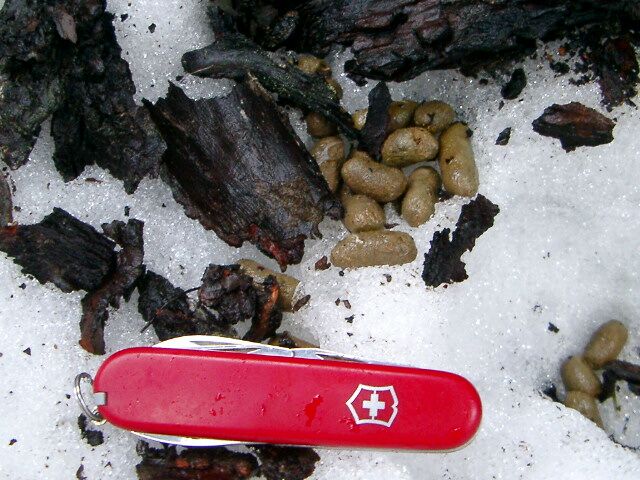This is, of course, a rodent who is never in much of a hurry. The gait is typically a walk or amble with a relatively wide straddle. The feet have a unique pad and long nails which result in rather distinctive textured surface tracks. Also look for signs of feeding behavior and scat.

A hapless fellow near Mt. St. Helens.
The front foot has four toes with long nails. The interdigital pad has a unique textured surface that often shows up in tracks left in mud or dust.
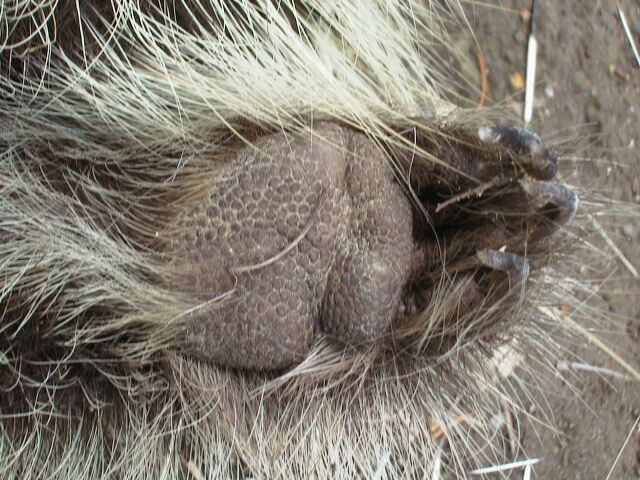
The hind foot has five toes in a 1-3-1 pattern (though you have to look close here to see the fifth toe next to the pad). The hind foot also has the textured pad and long nails.
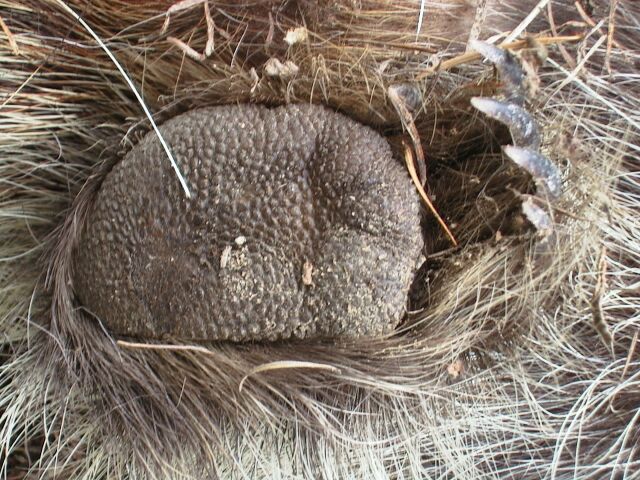
James Halfpenny found these tracks on the mud flats at Beaver Lake in Yellowstone National Park. The porcupine walked across the flats in several places, probably moving between feeding grounds in the conifers around the lake.
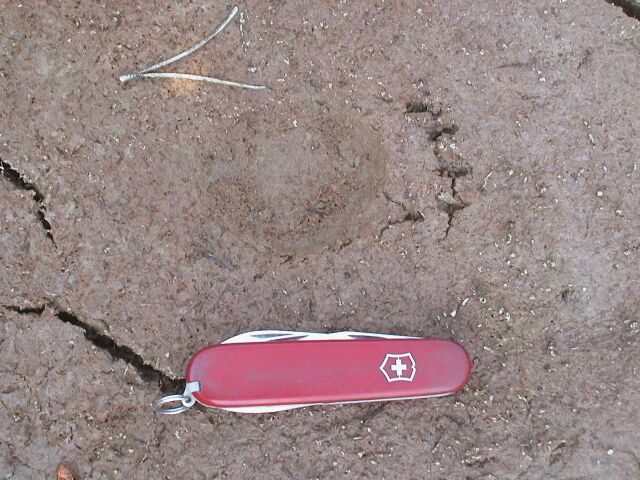
A porcupine family walked along a dusty dirt road in the Toppenish Wildlife refuge in eastern Washington as they traveled between stands of willow along the creek. Note the textured pad, the faint imprint of two claws (upper left), and the brush of the tail (lower left).

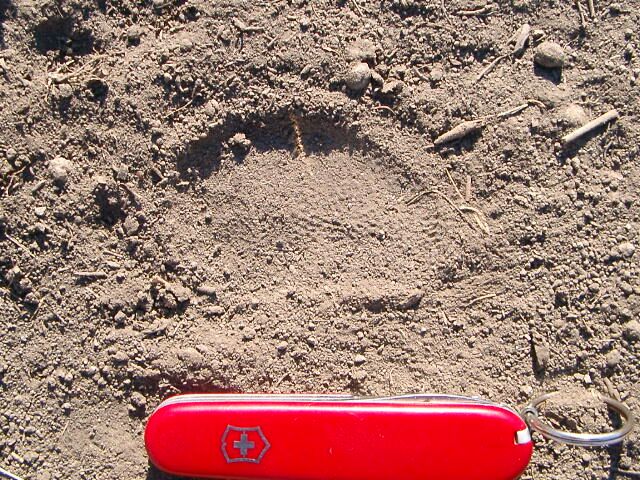
Here is a typical alternating walk (moving right to left in the photo). Parallel to this trail was an identical one with tracks half the size of this adult and a much shorter stride.
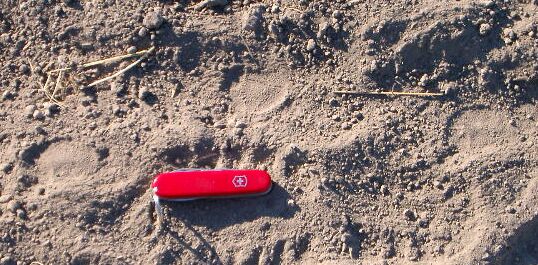
This appeared to be a side lope, a slow gallop with the body turned slightly to the direction of travel. All four feet show (LH LF RH RF) in a diagonal as it ran right to left. The end of the prior group shows in the lower right of photo, illustrating the overall stride.
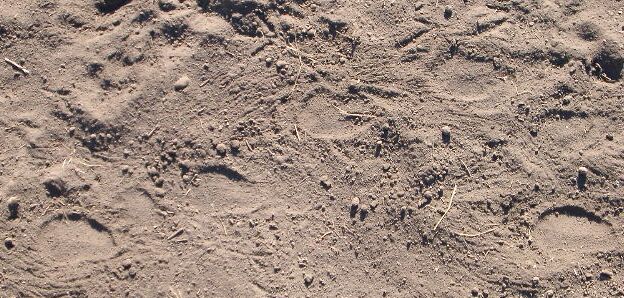
In old snow, the walk can look like this.
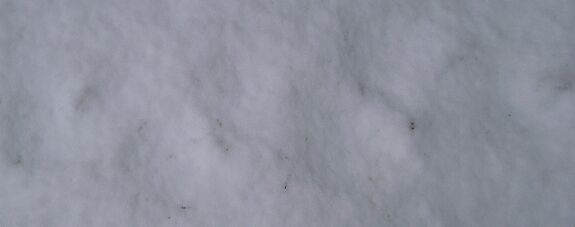
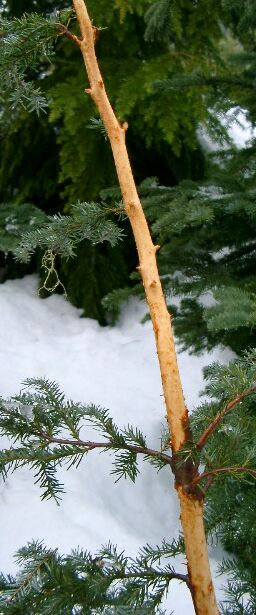
To the consternation of foresters, porcupine mainly feed on tree bark, especially conifers. Both saplings and older trees are eaten. The damage can be at ground level or high up in a young tree, usually in patches surrounding the branch that it stood on. Look for nipped branches and bark chips littering the ground.
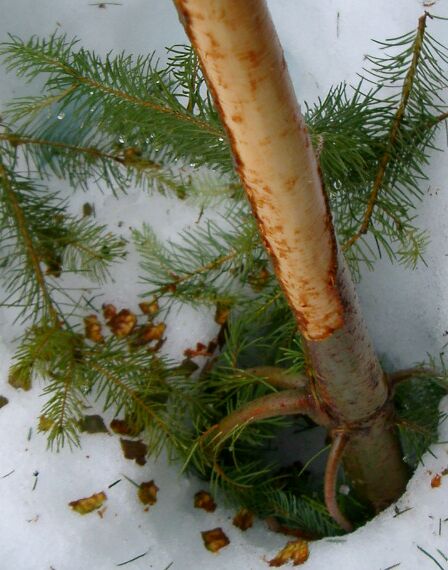
Woody scat, bark chips, and twigs are often left around the feeding area.
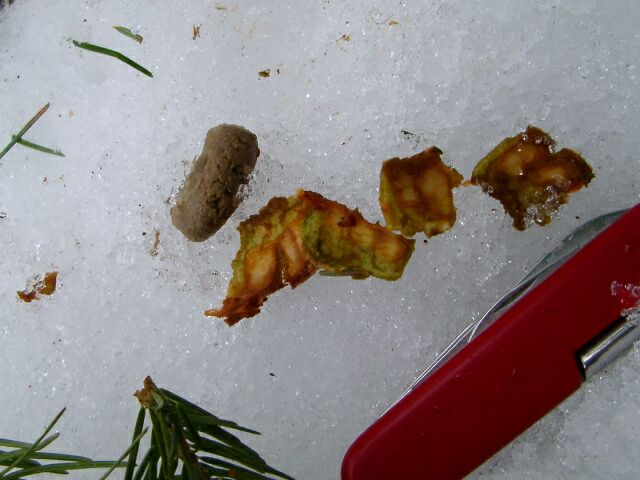
This collection of scat in a burned out stump suggested that this may have been a temporary den, a refuge from the winter weather.
